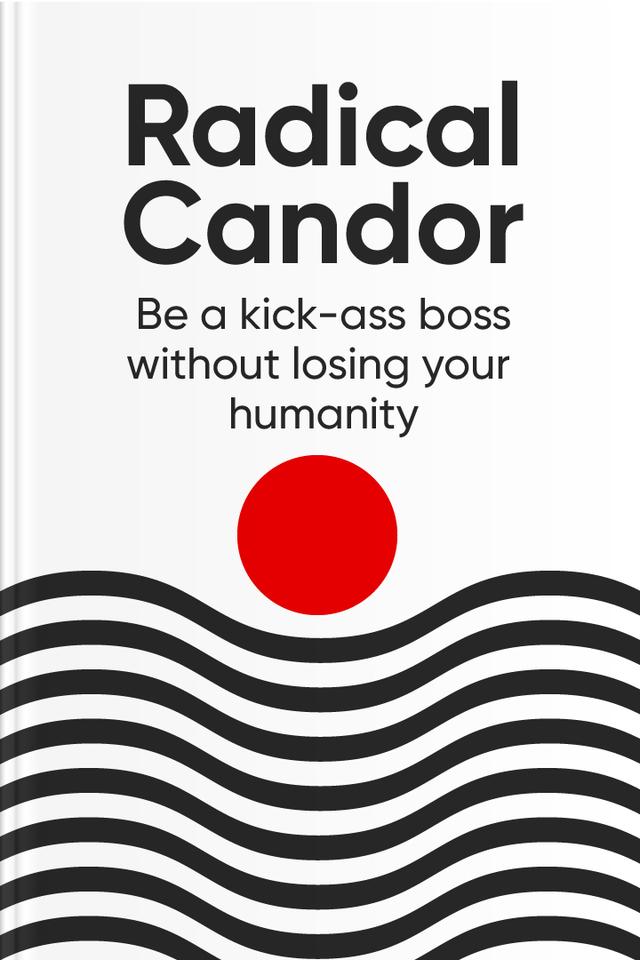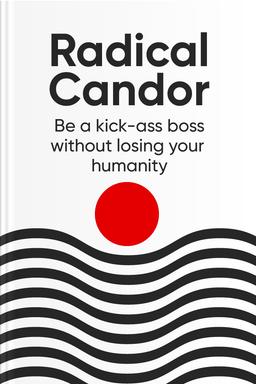You’ll learn
- How to balance praise and criticism effectively
- The secret to motivating every employee
- About practical tools for result-driven meetings
- How to foster healthy workplace relationships
- The ways to inspire your team towards their dreams
russia has launched a full-scale war in Ukraine. Donate to support Ukraine and protect the world’s peace.

first KEY POINT
The general idea of being a “boss” is running a big company, doling out instructions, and collecting results, but this is far from the truth. The job comes with many genuine, emotional, and interpersonal interactions.The staff members at your firm aren’t just cogs in your money–making machine; their well–being — mental, physical, and emotional — should also be of concern. Being a boss is about managing a company and its constituent members.To be a good boss, you must first accept that your role comes with the call to lead and be good at it. But what does it mean — to lead? Kim Scott outlines three primary functions of a manager in which they can show good leadership: guidance, team–building, and results.Guidance refers to the interaction between the boss and the employee post–performance or, simply put, feedback. A leader can provide feedback in two forms — praise and criticism. This part of leadership is delicate because there might be adverse responses to the feedback. The trick is to balance both types of feedback to achieve positive reactions and boost workers’ performance.
The key is establishing a good relationship with your staff, but how? Relationships make or break you as a manager; the quality of your relationship with those who directly report to you determines your success rate. Since trust is an expensive commodity in the management business, you must strive to establish it among the people you entrust with the running of your business.
Kim Scott, a boss herself, takes you through the core responsibilities and values of a true leader. She teaches how to think and elaborates on the emotional background a boss should have to keep their workers happy and motivated. This summary will help you realize what mistakes you might have made or making now while communicating with people and how you can improve your relationships with employees.
second KEY POINT
Kim Scott believes that radical candor is a quadrant in a graph of the various forms of guidance, including ruinous empathy, obnoxious aggression, and manipulative insincerity. Radical candor is simply the act of offering both criticism and praise in such a balanced way that it makes the person feel neither worthless nor complacent. It stirs people to work harder, make improvements, and perform better.Imagine that radical candor was the moon, and you proverbially shot for it and missed, while obnoxious aggression is the stars, being the closest substitute for radical candor even though it is heavily flawed. This guidance approach doles out criticism without caring personally for the recipient and offers praise laden with belittling comments. Even though it produces results in less time, this happens at the cost of losing staff most times due to its toxic nature.Things can only worsen if you stray a little further from obnoxious aggression and find yourself in manipulative insincerity, for example, emotional manipulation and coercion without regard for the person’s emotions. You might think you are showing that you care by withholding harsh, honest opinions, but you’d tell the truth if you did care; you are simply telling someone they’re great when they’re not just so they can like you. False praise and reserving criticism will only destroy the business you’re trying to protect.Lastly, ruinous empathy, an offshoot of manipulative insincerity, happens when bosses have a hard time criticizing underperformance but condone and encourage it instead. This behavior is the mark of ruin for a company because it prioritizes being nice over being direct, hence guaranteeing poor performances. Your desire to be liked or seen as nice is unhealthy and, unlike radical candor, will ensure that trust has eroded and the staff is comfortable being lazy.Radical candor doesn’t refer to being strict, stern, and opinionated to cause harm to your employees.

Continue reading with Headway app
Continue readingfirst KEY POINT
second KEY POINT
third KEY POINT
fourth KEY POINT
fifth KEY POINT